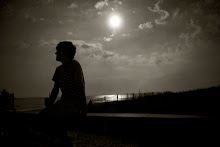 Coldplay
ColdplayCritics have derided them as “music for bed-wetters” and as a band that will put you to sleep. Their sensitive image is certainly not combated by their tender balladry or pathos-fueled music videos (See: “The Scientist”). In 2006, on the heels of two solid, well-received albums, the band dropped the flaccid, uninspired X&Y. Although it had a few great songs, it too often bored, and left many disappointed. In late April, the band unleashed a barrage of new media that left critics and fans bewildered. They no longer looked so gentle in their press photos (though they didn’t exactly look menacing or threatening, either). The album cover featured La Liberté Guidant le Peuple (“Liberty Leading the People”), a Eugéne Delacroix painting that depicts a triumphant battle scene from the French Revolution. Most shocking, of course, was lead single “Violet Hill”, a track featuring heavy lead guitar riffs and a marching stomp propelling it all forward into unfamiliar territory. Viva La Vida finds Coldplay rising from the wreckage of X&Y’s rusting hull, and surfacing with a broader, highly refined sound.
Producer Brian Eno’s masterful touch proves an invaluable asset to this album. Tabla drums and other exotic percussive instruments are heard prominently in both “Life in Technicolor” and “Lost!”, possible remnants from his collaborations with David Byrne (and, of course, Talking Heads). His synthesizer proficiency manifests itself in rushing, arpeggiated leads (“Life in Technicolor”, “Death and all His friends”) and dense clouds of dark ambience (“Violet Hill”). Jonny Buckland’s guitar on the bucolic “Strawberry Swing” is reminiscent of frequent Eno collaborator Daniel Lanois’ work on Apollo: Atmospheres and Soundtracks. As his renowned solo output and production prowess indicate, Eno is a master of atmosphere, and his undeniable influence allows Coldplay to not only warrant, but merit U2 comparisons.
Although the album retains all of the expected Coldplay hallmarks, the band manages to break free from their self-imposed mold rather often on Viva. The aforementioned “Violet Hill” is indeed one of the most masculine coldplay tracks yet heard. “42” begins as a plodding, mid-tempo ballad that quickly increases its pace and intensifies in mood, and ultimately achieves the exhilarating, escapist feel of classic U2, or even recent Arcade Fire tracks such as “Antichrist Television Blues” and “Keep the Car Running” (co-producer Markus Dravs engineered both Neon Bible and Viva La Vida, so it could be more than coincidence). “Strawberry Swing” hardly sounds like the same band responsible for such anthems as “Clocks” and “Yellow”, with its unusual guitar (imagine the Edge playing twangy Pedal-steel guitar in an empty grain silo) and the band’s most subtle use of strings yet, with staccato stabs underlying the twisting guitar line and vocals.
The set is not without a few poor choices. The two tracks at Vida’s center (“Lovers in Japan/Reign of Love” and “Yes”) are confusingly left undivided as single tracks. As the slash dividing the former indicates, the song has two very distinct halves. “Yes”, too, contains an entirely unnecessary second section. As with most of the band’s output, it sounds nice, but adds nothing to the album. It’s strange and somewhat shoegazey, Martin’s indecipherable falsetto hovering around thick guitars and propulsive drumming for about three minutes. “Lost!” finds Martin singing trite clichés (“Big fish in a little pond”, something about “Rivers you tried to cross”, etc.) backed by the previously mentioned (and really not that fitting) tabla drums and a hip-hop inspired drum pattern.
By the end of Viva La Vida, listeners will probably not have a greatly altered view of the band. “Violet Hill” really is the “roughest” of all the tracks in the cycle, and there are still gorgeous, swoon-worthy moments aplenty. However, the album is a marked improvement upon X&Y, and should reconcile the band with fans who were disappointed with that album. Coldplay haven’t undergone a radical reinvention, but they have fully realized the sound that they began to perfect on A Rush of Blood To the Head.







5 comments:
this is well written.
i'm excited to start listening to this album now.
"imagine the Edge playing twangy Pedal-steel guitar in an empty grain silo"
haha, you are awesome. No, this is a great analysis, Awesome job (again) Lukas!
Good review and good call on it not being that different from old Coldplay.
One suggestion-- Add some sort of number/star/smiley face system? I kinda enjoy those.
I agree with this review completely. Also - holy layout, Batman!
I love your new layout, too. So pleasing to the eye. Really fairly and well written review for this album. You hit on all the confusion of the tracks like "Lovers in Japan / Reign of Love." The last time I was in a car with friends I told them I hated having to listen through the first half when all I really wanted to hear was the second.
I'm a proud sister!
Post a Comment